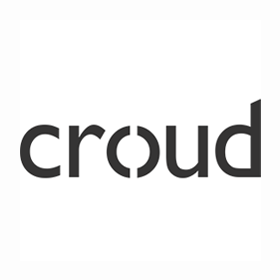We connect you with the best and most reliable agency partners for your projects. All DAN members are thoroughly vetted and ready to deliver exceptional results.

Featured Agencies
Prominent Telecommunications Marketing Agencies of UK
-
Creative Brand Design
An award-winning London Digital Agency, specialising in Digital Marketing Services, SEO Optimised Website Design and Bespoke Web Development.Services- Web Design
- Web Development
- UX Design
- SEO
- eCommerce
- Branding
- Creative
- Digital Strategy
Industries- Travel & Tourism
- Finance
- Automotive
- Hospitality
- Energy
- IT & Technology
- Telecommunications
- Gaming
Select a region, city and industry type to discover the best digital marketing agencies!
DAN Member Agencies
Providing Telecommunications Marketing Services in UK
All telecommunications marketing agencies in the UK have been vetted and verified against the following criteria:
- Portfolio Quality
- Reliable Services
- Sectoral Expertise
- Team Transparency
If you have any feedback regarding the agencies, please contact us.
-
EchoGlobal
HQ: LondonStandard Member• We connect tech-oriented companies and startups with exceptional remote software developers across the world, focusing on talent from Eastern Europe.Services- Software Development
- Web Development
- Mobile App Development
11-50 -
Creative Brand Design
HQ: London5.0The rating displayed is a weighted average derived from verified reviews across trusted platforms, further validated by the DAN team for agency authority.Standard MemberAn award-winning London Digital Agency, specialising in Digital Marketing Services, SEO Optimised Website Design and Bespoke Web Development.Services- Web Design
- Web Development
- UX Design
- SEO
- eCommerce
- Branding
- Creative
- Digital Strategy
11-502 AwardsAgency of the MonthFeatured Agency -
UX Connections
HQ: London+2 cities- USA
- New York
- Australia
- Sydney
Gold MemberUX Connections, the UX agency with UX/UI consultants to help your digital product succeed. We provide specialised, flexible, on-site UX help to our clients.Services- Digital Product Design
- Mobile App Development
- Software Development
- UX Design
11-50
Best Digital Marketing Agencies by Industries in UK
Explore the best digital marketing agencies in UK specializing in the industry you need
- Automotive Marketing Agencies in UK
- Beauty & Cosmetics Marketing Agencies in UK
- Digital Marketing Agencies in UK
- Education Marketing Agencies in UK
- Energy Marketing Agencies in UK
- Fashion & Retail Marketing Agencies in UK
- Finance Marketing Agencies in UK
- FMCG Marketing Agencies in UK
- Food & Beverage Marketing Agencies in UK
- Healthcare Marketing Agencies in UK
- Hospitality Marketing Agencies in UK
- Insurance Marketing Agencies in UK
- IT & Technology Marketing Agencies in UK
- Legal Marketing Agencies in UK
- Luxury Marketing Agencies in UK
- Media & Entertainment Marketing Agencies in UK
- Non-Profit Organization Marketing Agencies in UK
- Real Estate Marketing Agencies in UK
- Sports Marketing Agencies in UK
- Startup Marketing Agencies in UK
- Travel & Tourism Marketing Agencies in UK
- Wellness & Fitness Marketing Agencies in UK
How to Choose a Telecom Marketing Agency in UK
When choosing a telecom marketing agency in UK, it’s crucial to find a partner who understands the telecommunications industry’s unique needs. Look for an agency with a proven track record in creating effective campaigns for telecom businesses. Check their expertise in digital strategies, as boosting your online presence is essential. Consider their experience with influencer marketing to increase brand awareness through trusted voices as well. Additionally, select a telecom marketing agency that has proven experience in generating leads and nurturing customer relationships. Their creativity in developing engaging campaigns should also be a factor in your decision. Finally, reviewing case studies and client testimonials from various telecom marketing companies will give you insight into their success stories and help you make an informed choice.
Free Listings
of Telecommunications Marketing Agencies in UK
-
YANDA Software & Marketing
We create beautiful, high-performance, accessible websites to help generate leads and increase sales.
HQ: Southampton -
Fall off the Wall
A forward-thinking TV advertising & creative production agency, with a passion to create new stories and build brand assets to engage audiences.
HQ: London -
Inc Studio
A forward-thinking creative studio specialising in websites, design, strategy and SEO.
HQ: Liverpool -
Creation Web Solutions
Portsmouth's Multi Award Winning Full Service Web Agency, helping businesses grow online with expert SEO & Web Solutions.
HQ: Portsmouth -
Clever Clicks Digital
We propel our clients from market players to market leaders with our innovative and results-driven digital marketing strategies.
HQ: Nottingham -
The Lead Gen Specialists
Effective, professional, and targeted UK Telemarketing & Lead Generation services across multiple sectors.
HQ: Essex














































